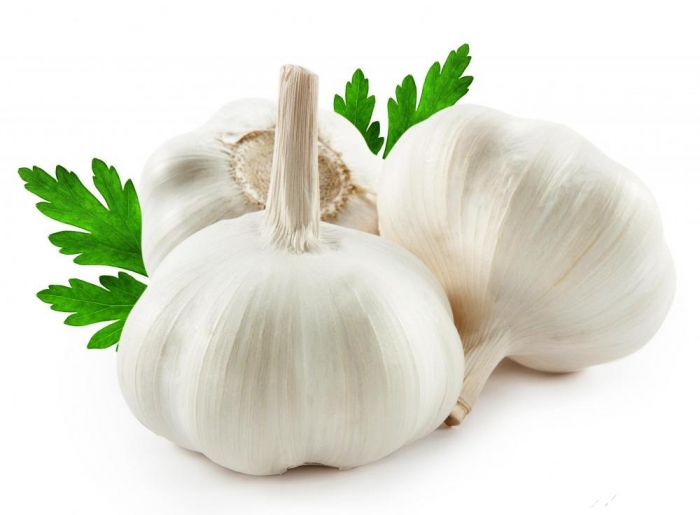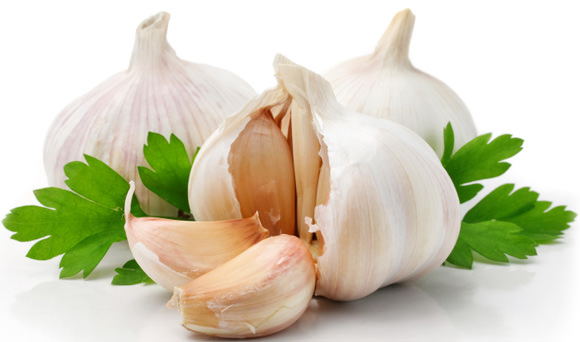
Help for the heart
Garlic contains more than 100 chemically active compounds. One of the most important is alliin, a sulphur compound that is transformed into allicin when the bulbs are crushed or chewed. Scientist think that allicin responsible for garlic’s antibiotic properties as well as many of its heart benefits. What is known is that in countries where people eat lots of garlic, there seem to be unusually low rates of heart disease.
Consider garlic’s effects on platelets, cell-like structures in blood that tend to stick together and form clots in the coronary arteries. One study discovered that the rate of platelet aggregation, or clumping, in men given the equivalent of 6 cloves of fresh garlic dropped anywhere from 10 to 58 per cent. Certain chemicals in garlic may be as effective as aspirin at inhibiting the formation of blood clots.
Garlic appears to function somewhat like prescription drugs that inhibit the liver’s production of cholesterol, the fatty stuff that contributes to plaque formation and increases the risk of heart disease. Reviews of dozens of scientific studies suggest that eating garlic every day can lower cholesterol levels by between 9 to 12 per cent.
Garlic improves bloodflow throughout the body, not just in the coronary arteries. It’s a vasodilator, which means it causes blood vessels to expand and blood pressure to drop. It also appears to improve the flexibility of arteries.
A cancer fighter
Dozens of studies suggest that garlic blocks cell changes that can lead to cancer – and may destroy cancer cells that have already formed. In one study, eating less than a clove a day was shown to cut the risk of prostate cancer in half. A study of women in Iowa in the USA found that those who ate garlic every week were about a third less likely to get colon cancer than those who never ate it.
A Chinese study found garlic consumption to be associated with a significantly reduced risk of stomach cancer. The incidence in high garlic-eaters was only 8 per cent of that in minimal garlic-eaters – but the garlic consumption was very high, amounting to about 20g (at least a whole bulb) a day.
No one is certain exactly how garlic combats cancer. Allicin and other compounds it contains seem to work directly against tumours. Garlic may also block the formation of cancer- causing compounds. It neutralizes dangerous molecules called free radicals, by products of the oxidation process that contribute to cell ageing and also damage DNA and initiate carcinogenic cell changes. It inhibits the formation of nitrites, chemicals involved in triggering stomach cancer. And it boosts the immune system.
An edible antibiotics
Raw garlic that has been crushed and applied to wounds kills a variety of infection-causing organisms, including the fungi that cause athlete’s food, vaginal yeast infections and many types of ear infection. It kills many different sorts of bacteria, including the one that cause tuberculosis and the dreaded E. coli, the culprit behind many urinary tract infections. It may even kill some bacteria that are resistant to standard antibiotics. Garlic destroys germs both on the outside and inside of your body. Eating it may help to protect the lining of your gut from H. pylori, the bacteria that causes most peptic ulcers. And because garlic’s essential oil is excreted through the lungs, it is particularly useful when you have a respiratory ailment.

How much to take
One to cloves of raw or lightly cooked garlic a day are probably enough to obtain most of its healing and preventative benefits. Raw garlic packs more healing punch, as cooking inhibits the formation of allicin and eliminates some of the other healing chemicals.
You should bruise, chop or chew the clove to make sure the alliin in raw garlic is converted to allicin. Interestingly, according to the US National Cancer Institute, a delay of about 15 minutes between peeling and cooking garlic allows enzyme activities to take place which may help to preserve some of the healing properties normally lost in cooking.
The problem (for some people) with fresh garlic is its powerful aroma and flavour. If you want to get rid of ‘garlic breath’, munch a few springs of parsley after eating garlic.
Doctors agree that fresh garlic offers the greatest healing and preventative properties. But if you really can’t stand the taste, then you could take enteric-coated garlic supplements instead. These won’t give you garlic breath because they pass through the stomach undigested. Doctors advice taking 400 to 600mg of garlic in supplement form a day – but you can take this dose four times a day if you’re fighting a cold or flu. Look for a supplement standardized to contain 400mcg of allicin potential per tablet.
(Alert Do not take therapeutic doses of garlic if you take the blood thinning medication warfarin.)
Cautions and Side Effects
Avoid garlic supplements with anti-coagulants (warfarin) and medications for diabetes.